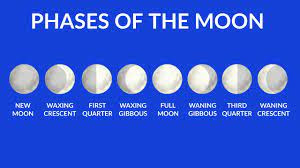[Joseph] had another dream and told it to his brothers, saying, “Look, I have had another dream: the sun, the moon, and eleven stars were bowing down to me.” But when he told it to his father and to his brothers, his father rebuked him and said to him, “What kind of dream is this that you have had? Shall we indeed come, I and your mother and your brothers, and bow to the ground before you?” So his brothers were jealous of him, but his father kept the matter in mind.
Genesis 37: 9-11 NRSVue
It is a peculiar pleasure to turn on the radio in a vehicle and catch a portion of an interview, one that invites the listener to search out more. I did that the other day when I heard Matt Galloway of CBCs The Current speak with Rebecca Boyle, author of Our Moon: How Earth's Celestial Companion Transformed the Planet, Guided Evolution, and Made Us Who We Are.
I was immediately drawn in, even though I didn't know who this author was nor the name of the book and there were close to the conclusion of the conversation. So, I had to find the transcript of the conversation.
Boyle, a science reporter, said so many wise and intriguing and poetic things about the moon which for me rang true:
... it hides behind the leaves of trees. And, especially when it's not full and when it's a crescent or when it's in its gibbous phase, which is when it's like this lopsided, not quite round shape. It sort of just hangs out. And it draws you to it maybe if you're in open country and there's not buildings or trees around you, it catches your eye.
God covers the face of the full moon
and spreads over it his cloud.
10 God has described a circle on the face of the waters,
at the boundary between light and darkness.
Job 26: 9-10 NRSVue
The moon peeks out in various places in scripture, including within one of Joseph's dreams, as well as in the Psalms. Jesus would have gone through his lonely hours in the Garden of Gethsemane under the Paschal moon, and our celebration of Easter is always on the first Sunday following the first full moon followig the Spring Equinox. But I have blathered on about this in blogs past.
I also appreciated this exchange:
MATT GALLOWAY : You've said that religion
and science stem from our relationship with the moon. How so?
REBECCA
BOYLE: Yeah. I think our fascination with the moon is largely responsible
for the creation of both of these enterprises. And I think they're probably a
lot more alike in their goals than people like to think they are. Maybe not
their methods, but both religion and science give us tools that can help us
understand the universe and our place in it. And we struggle with things like
eternity and death and return. And the moon is the really obvious way to
conceptualize these things. It comes back, you know. It goes away. It changes
every night, and yet it returns. And so it symbolizes a lot of these events
that are difficult for people to grasp. Like growth and becoming and
diminishment. And I think it sort of is the centre of our attempts to
understand those things. And a lot of that sort of fed the beginnings of
religion. But then those attempts fed the beginnings of science, as well. And I
think they're more connected than people may think.
Again, so thoughtful, especially in this time when humans are striving and struggling to return to the moon.
The next full moon, the Cold, or Frost, or Winter Moon, is January 25. Look up, way up, and let the heavens declare the glory of God.


So much food for thought here....with the moon's role in the beginnings of science and religion. Thank you- KB
ReplyDeleteI'm grateful that you took the time to express thanks, Kathy. The interview is well worth a listen, both to admire the skill of Matt Galloway, and for the warmth in the responses by Rebecca Boyle.
ReplyDelete